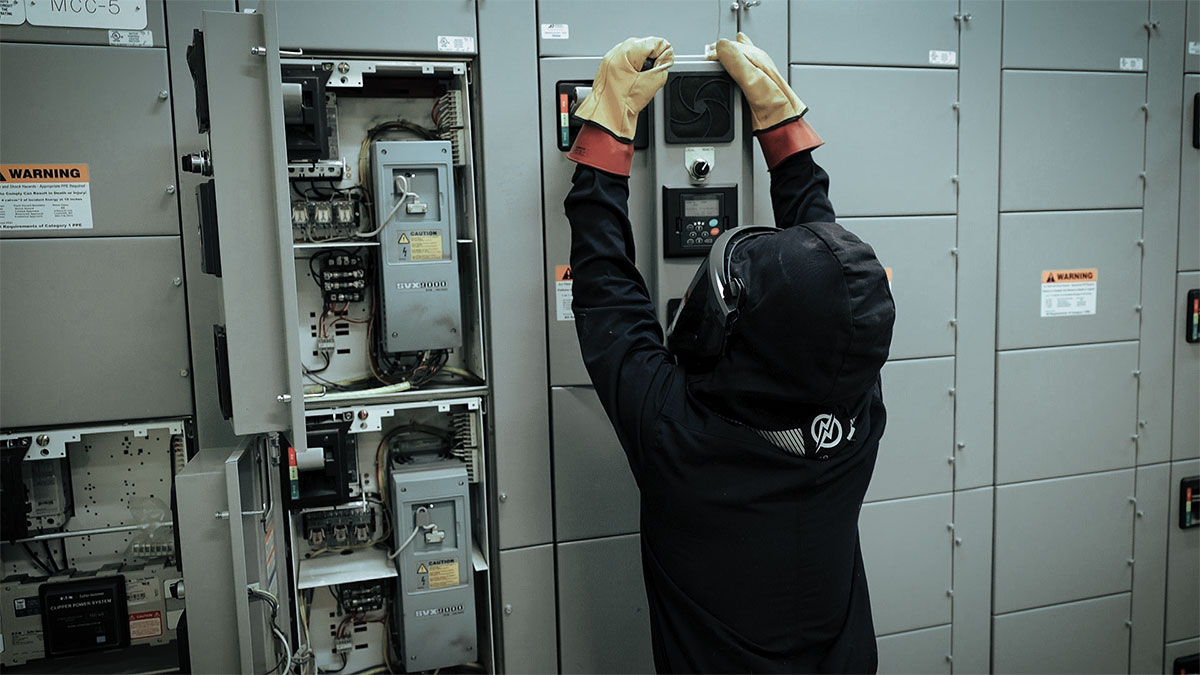The Canadian Electrical Code provides safety standards for installation and maintenance of electrical equipment. Its object is to prevent electrical fire and shock hazards when we follow its rules. The CEC is not intended as a design standard, but only a set of least requirements to help us achieve safe electrical installations.
For the most part, the CEC provides us with direction and guidance on how to achieve safe electrical wiring and equipment installations. But in Section 2 we also find a number of rules on working safely when operating and maintaining electrical equipment, and how to arrange electrical facilities so as to reduce electrical hazards. Rules 2-300 to 2-322 offer us some mere minimum requirements that we must at all times enhance with other requirements and safety regulations for working in an electrical environment. It goes without saying that our labour, building and fire regulations must be strictly followed, since they add much greater detail to these rules.
Our list of personal safety rules begins with Rule 2-300, a motherhood statement, advising us that electrical equipment must be kept “”in safe and proper condition.”” It tells us that emergency equipment such as fire alarm systems and emergency power must be tested to ensure they will be available when we need them. It reminds us that seldom-used equipment should be checked before use and that defective wiring or equipment must be repaired or disconnected before it causes any problems. None of this is news, only a heads up and common sense.
Rule 2-302 addresses a special issue, maintaining electrical equipment in hazardous locations where flammable materials or gases may be present. You will recall that Section 18 of the code defines hazardous locations as places where flammable or explosive gases, dusts or fibres are present in sufficient quantity to create a fire or explosion hazard. Electrical equipment and wiring in these areas must meet Section 18 requirements in all cases. And Rule 2-302 adds what must be perfectly obvious—that alterations and repairs must not be done on live equipment, also that it’s important to maintain hazardous location equipment in its original, safe condition. Although the rule is not that specific, it follows that except for approved, intrinsically safe instruments, electrical tools and equipment must also meet the standards for use in each hazardous location.
Rule 2-304 prohibits working on live electrical equipment unless absolutely necessary. There may be times when shutting down may be impracticable or when inspection and testing of live equipment becomes necessary. But in all other cases, Rule 2-304 requires a lockout procedure, warning signs and sentries to ensure that equipment is not accidentally re-energized while people are working on it. Rule 2-304 provides a minimum of detail. Obviously, its requirements must be beefed up with other legislation and guidelines on disconnection procedures and working with live equipment.
Rule 2-306 recognizes that occasionally we do have to work with the power on, and when this becomes necessary, it tells us to use rubber gloves, electrically-resistant footwear and rubber mats to isolate workers from electrical shock risks and make the task as safe as possible. Although not specified in the CEC, we should add to this list, fire-resistant clothing, face and eye protection, head protection and other precautions to help us control the harmful effects of electrical flash or explosion.
To further enhance our personal safety, Rules 2-308 and 2-310 provide some minimum requirements for working space, entry and exit space to electrical rooms, vaults and other locations where electrical equipment is installed.
Rule 2-308 requires a minimum of one metre working space about electrical equipment at all locations where access is required for operation or maintenance. This obviously applies to the front, but may also apply to the sides or backs of equipment where access is necessary. Please note that the prescribed minimum distance is in addition to any space necessary for devices such as draw-out circuit-breakers or motor starters when in their fully drawn out positions. The rule also directs us to Table 56, which provides minimum working space around bare live parts.
Rule 2-310 further helps us reduce the risks by stipulating that when equipment is rated 1200 amperes or higher or above 750 volts, the exit route must be at least 1.5 metres wide when exiting a room during an electrical equipment fault. An acceptable alternative would be to provide a second exit that avoids having to pass electrical equipment under fault conditions. Also, electrical room doors must be capable of opening from inside the room without using a key or tools.
Finally, Rules 2-312 to 2-320 ask us to ensure that working space and exits are not blocked by storage, that flammable materials not be stored near electrical equipment and that adequate lighting and drainage be provided. The purposes of all these common sense rules are to ensure a safe electrical environment to the extent possible and the use of safe procedures when working on or operating electrical equipment.
As with previous articles, you should always consult the electrical inspection authority in each province or territory as applicable for a more precise interpretation of any of the above.














Find Us on Socials